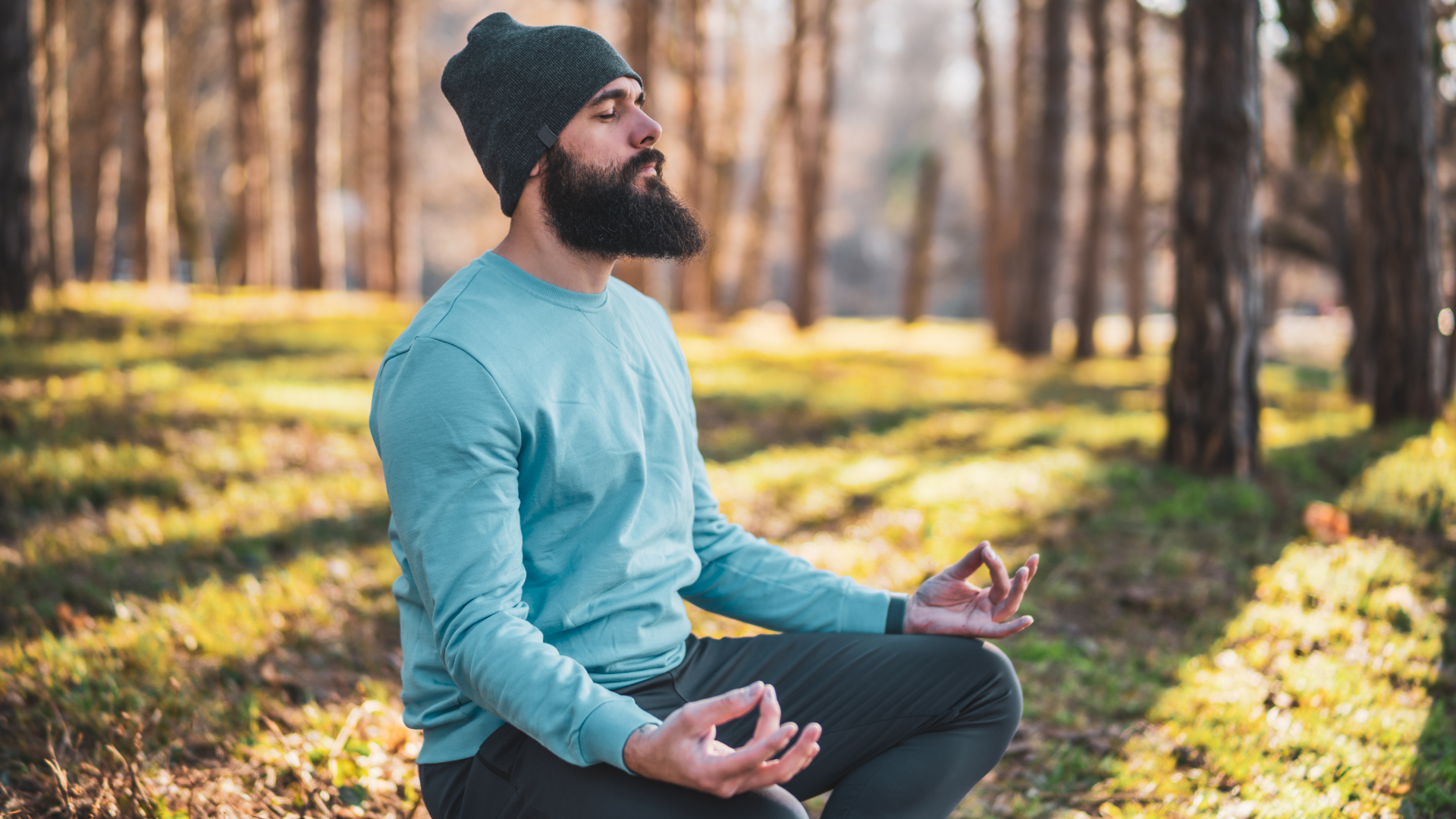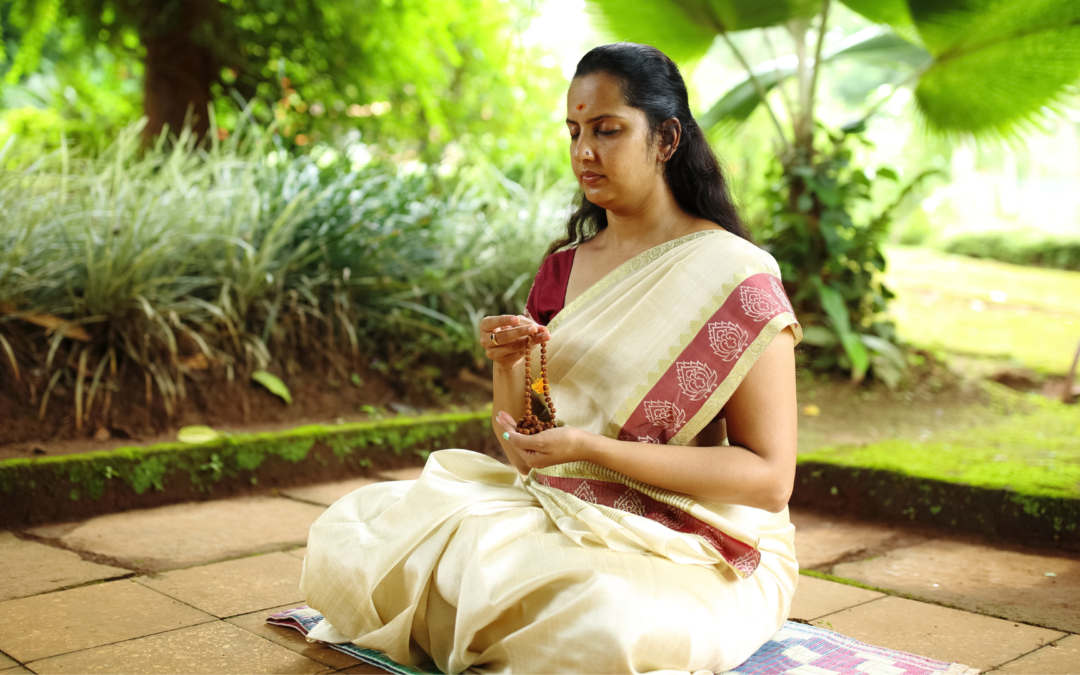The Spiritual Side of Yoga: Exploring Its Ancient Roots
Yoga is a practice that’s been blowing up all over the world, from fitness studios to apps, but there’s more to it than just nailing that perfect headstand or stretching out those tight hamstrings. Yoga is about much more than just physical movement—it has deep spiritual roots that trace back thousands of years. India leads the world in meditation, with an estimated 80.7 million people actively engaging in the practice. If you’ve ever wondered what’s really behind the practice beyond just getting flexible, then let’s dive into the spiritual side of yoga, and explore its ancient origins in a laid-back way. So grab your mat, take a deep breath, and let’s go on a spiritual journey.

The Origin Story
Before we get into the spiritual vibes, let’s travel back in time. Yoga’s roots can be found in ancient India, stretching back at least 5,000 years. It first appeared in the Indus Valley Civilization, which was one of the earliest advanced civilizations in the world. Back then, yoga wasn’t about exercise—it was a whole system of living and thinking that people used to get closer to the divine.
The earliest mention of yoga can be found in the Rig Veda, one of the oldest sacred texts from India. It was a collection of hymns, rituals, and mantras that priests and sages used to connect with the divine. Yoga was seen as a way to tap into higher states of consciousness, far beyond the physical body.
As time went on, yoga evolved into something deeper and more organized. In the Upanishads, another set of ancient texts, the focus of yoga became less about rituals and more about internal spiritual practices. People were looking inward, meditating, and practicing self-discipline to understand their own minds and connect with something greater than themselves. This shift was a big deal because it laid the groundwork for the spiritual side of yoga that we still practice today.
Yoga as a Path to Enlightenment
In its most traditional sense, yoga is a spiritual path. It’s about union—specifically, the union of body, mind, and spirit. The word “yoga” itself comes from the Sanskrit word “yuj,” which means to yoke or unite. The goal of yoga isn’t just physical health, but enlightenment, or self-realization—a state where you’re completely in tune with the universe and your true self. It’s about transcending the ego, letting go of distractions, and finding that deeper peace and wisdom that’s already inside you.
There are many different paths of yoga, each with a unique focus, but they all aim at the same thing—spiritual growth. Let’s explore a few of these paths:
- Karma Yoga: This is the yoga of action. It’s all about selfless service—doing good for others without expecting anything in return. The idea is that by helping others, you’re purifying your soul and dissolving your ego.
- Bhakti Yoga: Bhakti means love and devotion. This is the path of the heart, where you devote yourself to a higher power, whatever that may look like for you. It could be God, the universe, or even a personal teacher. Through prayer, chanting, and rituals, you cultivate a deep, loving connection with the divine.
- Jnana Yoga: The yoga of knowledge. This is a more intellectual path that involves deep study of sacred texts and philosophies. Practitioners of Jnana Yoga seek to understand the nature of reality and themselves through wisdom and contemplation.
- Raja Yoga: This is often called the “royal path” and focuses on meditation and strict self-discipline. The idea is to control the mind through practices like meditation, breathing techniques, and moral conduct, ultimately leading to spiritual enlightenment.
These are just a few examples of how yoga is much more than a workout. It’s a lifelong journey toward inner peace, self-awareness, and connection with the universe.
The Eight Limbs of Yoga
When you think of yoga, you probably picture a class full of people doing poses like Downward Dog and Warrior. Those poses, known as asanas, are a big part of yoga, but they’re just one piece of the puzzle. The physical side of yoga is only one of the eight limbs of yoga, a framework that was outlined by the ancient sage Patanjali in his text, the Yoga Sutras.

Here’s a quick breakdown of the eight limbs:
- Yama: These are the ethical guidelines for living, like non-violence, truthfulness, and not being greedy. Basically, it’s about being a decent human being.
- Niyama: These are personal practices for self-discipline and spiritual growth, like cleanliness, contentment, and devotion to a higher power.
- Asana: This is the physical practice of yoga that we know today—the postures and poses that help to strengthen and stretch the body. But traditionally, asanas were designed to prepare the body for meditation.
- Pranayama: Breath control. Pranayama is all about mastering your breath, which is said to be the link between your body and your mind. Through breath, you can calm your mind and connect with your inner self.
- Pratyahara: This is the withdrawal of the senses. It’s about turning your attention inward and not getting distracted by the external world. In other words, it’s the art of unplugging.
- Dharana: Focus and concentration. Once you’ve unplugged from distractions, you focus your mind on one thing—a mantra, a candle flame, your breath. It’s the practice of quieting the mind.
- Dhyana: This is meditation in its purest form. It’s when you’re in a state of deep focus and awareness, without any mental chatter. You’re just fully present.
- Samadhi: The ultimate goal of yoga. This is the state of bliss and enlightenment where you feel at one with the universe. It’s like the spiritual jackpot, but it takes years of dedication to get there.
The Role of Meditation in Yoga
Meditation plays a huge role in the spiritual side of yoga. While the poses are great for the body, meditation is what really helps to calm the mind and tap into those higher states of consciousness.
Traditionally, yoga asanas (poses) were practiced to make the body strong and flexible enough to sit in meditation for long periods of time. Online meditation classes help you connect with your true self, beyond the endless stream of thoughts and worries that usually fill your mind.
There are many different meditation techniques in yoga, but they all share the same goal: to quiet the mind and focus your awareness. Whether it’s focusing on your breath, repeating a mantra, or simply observing your thoughts without getting caught up in them, meditation is the gateway to spiritual growth in yoga.
Explore Our Blog: “Yoga Meditation: Techniques and Tips” for a Peaceful Mind and Body
Modern Yoga vs. Traditional Yoga
These days, yoga has become a global phenomenon. There are yoga studios on almost every corner, and people are practicing it for all kinds of reasons—from getting fit to reducing stress. But while modern yoga tends to focus heavily on the physical side, traditional yoga is much more about the spiritual journey.
In a typical yoga class, you might focus on asanas (the physical postures) and maybe end with a few minutes of meditation. But in ancient times, yoga was mostly about meditation, breath control, and self-discipline. The physical postures were just a small part of the bigger picture.
That doesn’t mean modern yoga is bad—it’s just evolved over time to fit into our busy, modern lives. But if you’re only doing yoga for the physical benefits, you’re missing out on its deeper spiritual power. Yoga is a tool for self-transformation, and by diving into its spiritual aspects, you can experience a deeper sense of peace, purpose, and connection.
How to Incorporate Spiritual Yoga Into Your Practice

If you’re ready to go beyond the physical and start exploring the spiritual side of yoga, here are a few simple ways to begin:
- Meditate regularly: Even if it’s just for a few minutes a day, try to sit quietly and focus on your breath or a mantra.
- Practice mindfulness: Bring awareness to everything you do—whether it’s eating, walking, or working. The more present you are, the more connected you’ll feel to your spiritual self.
- Explore the teachings: Read ancient texts like the Yoga Sutras, the Bhagavad Gita, or the Upanishads to learn more about the spiritual philosophy behind yoga.
- Chant or use mantras: Sound and vibration have been used for thousands of years in yoga to elevate your consciousness. You don’t have to chant in a group; you can do it in the privacy of your home.
- Seek out a teacher: If you want to dive deeper, find a teacher who focuses on the spiritual aspects of yoga and can guide you on your journey.
Conclusion
Online yoga classes are way more than just getting fit or flexible. It’s an ancient spiritual practice with deep roots in self-discovery, inner peace, and connecting to something bigger than ourselves. By tapping into its spiritual side, you can transform not just your body but your mind and soul too. Whether you’re a beginner or have been practicing for years, remember that yoga is about the journey, not the destination. Keep exploring, stay open, and enjoy the ride!
Inquiry
If you have any questions, please feel free to reach out. We’ll be glad to help!

